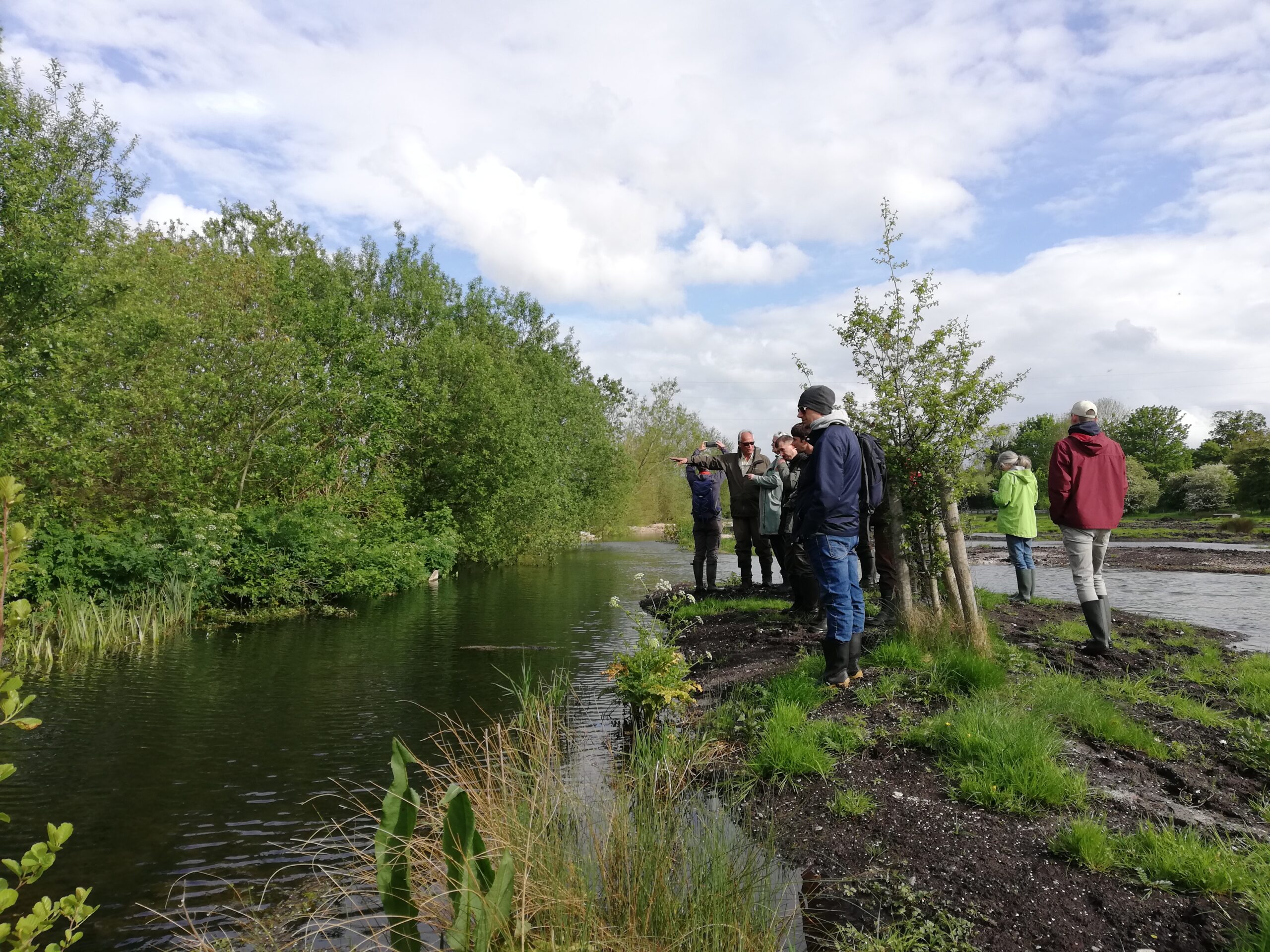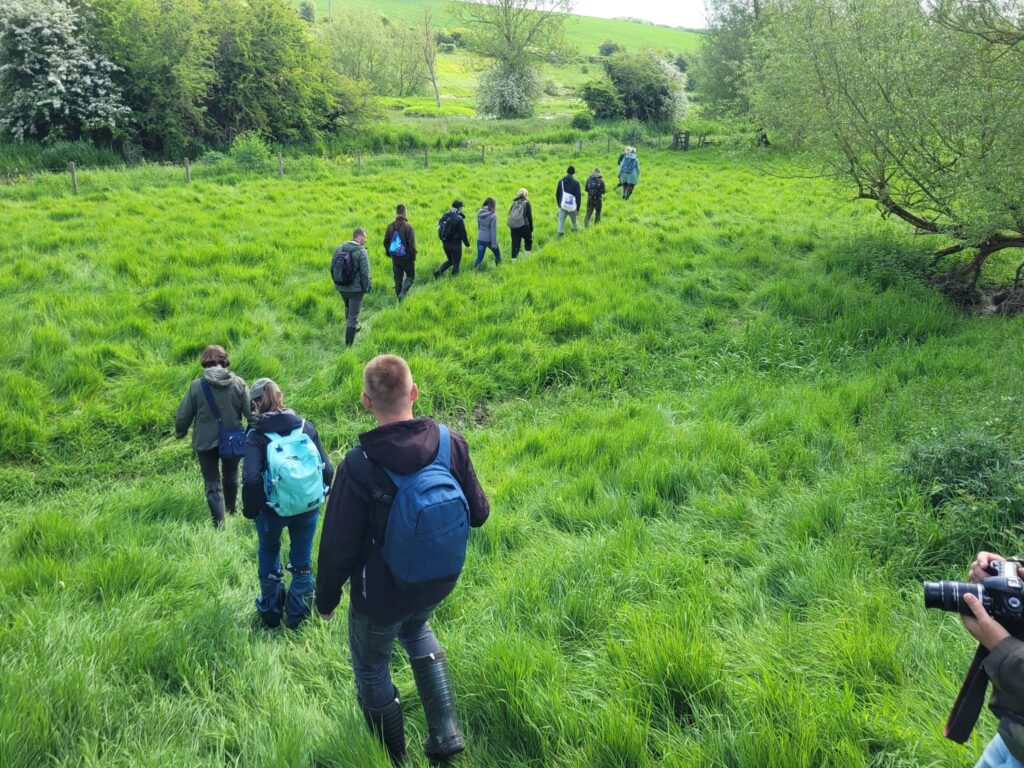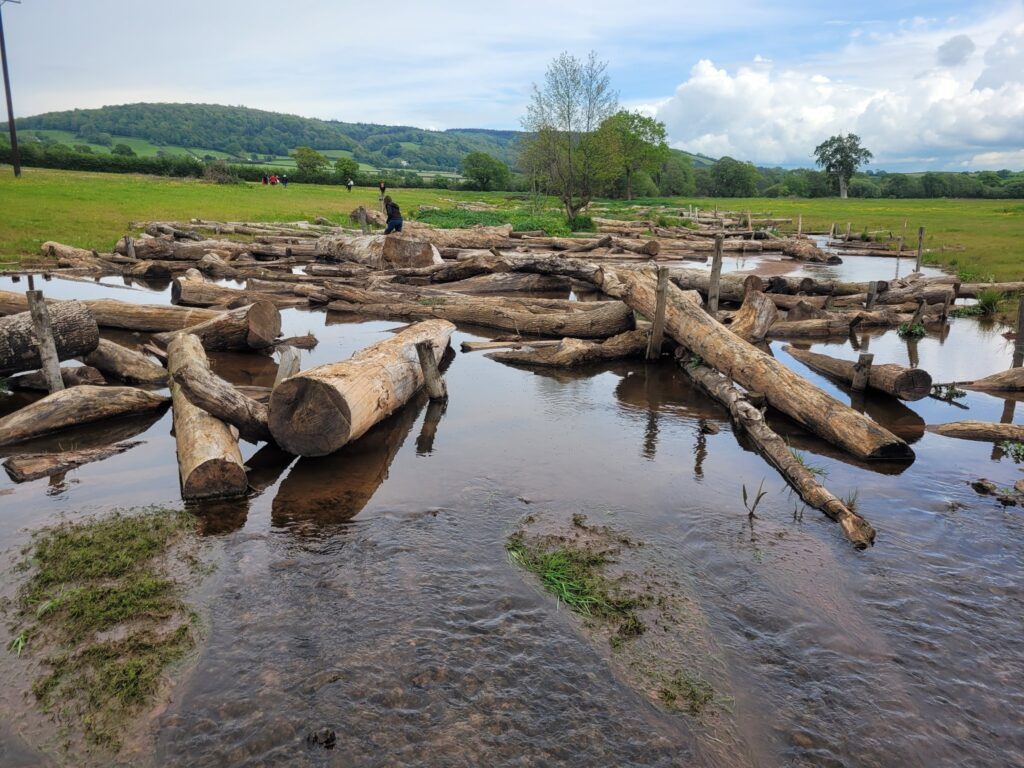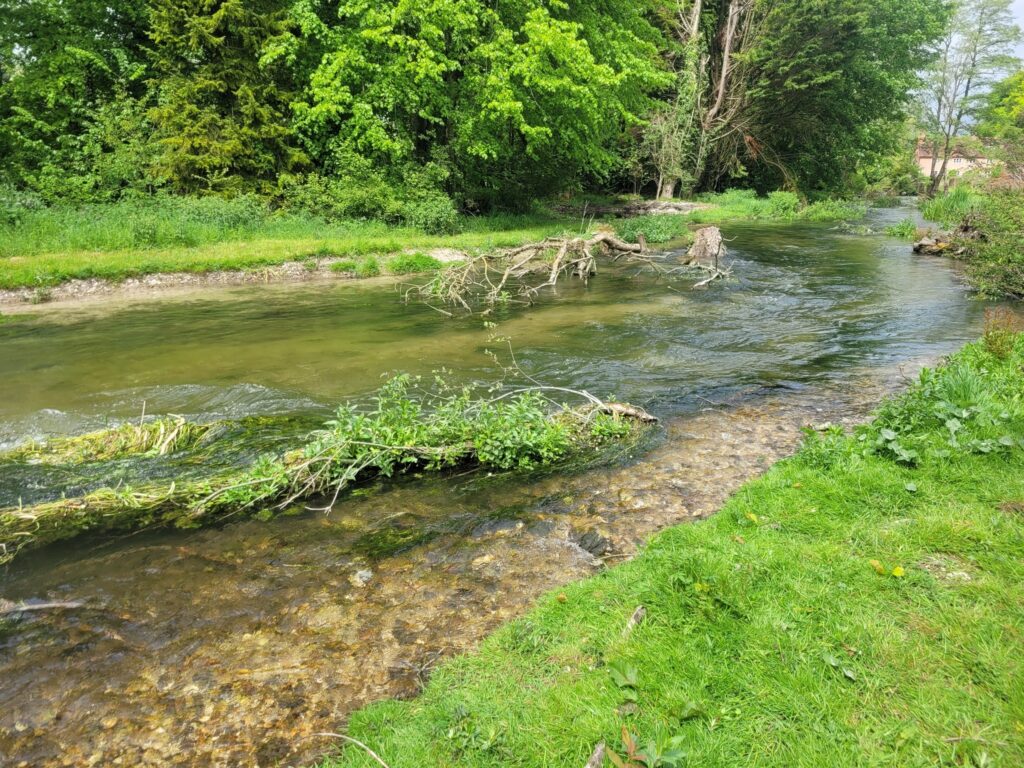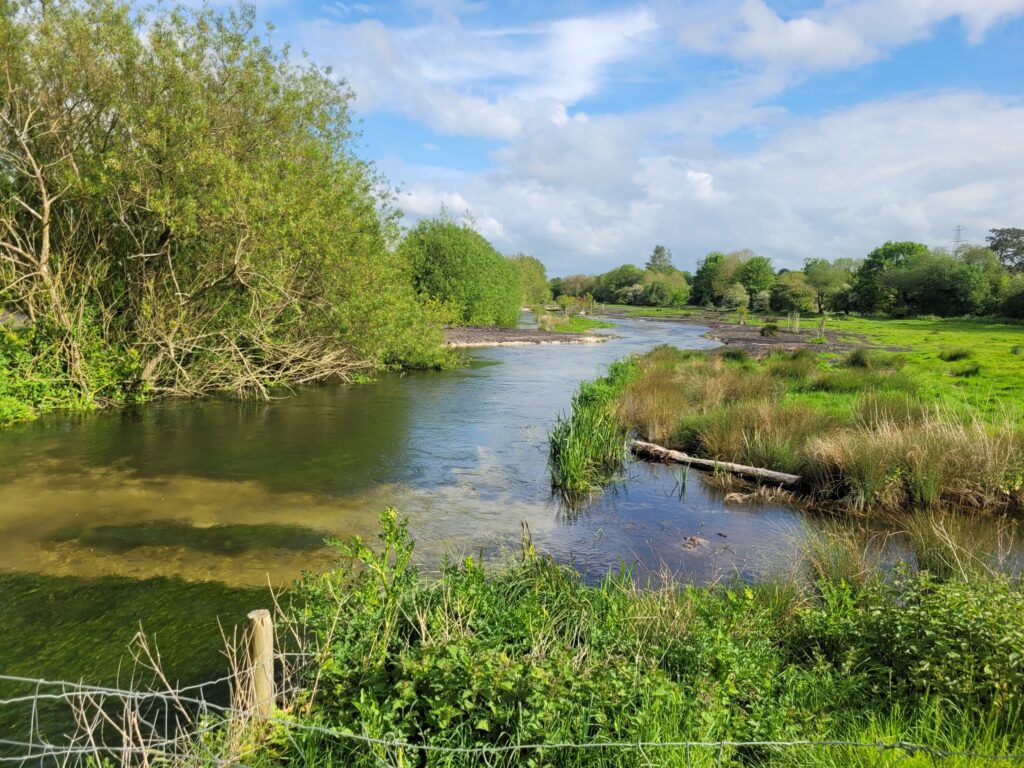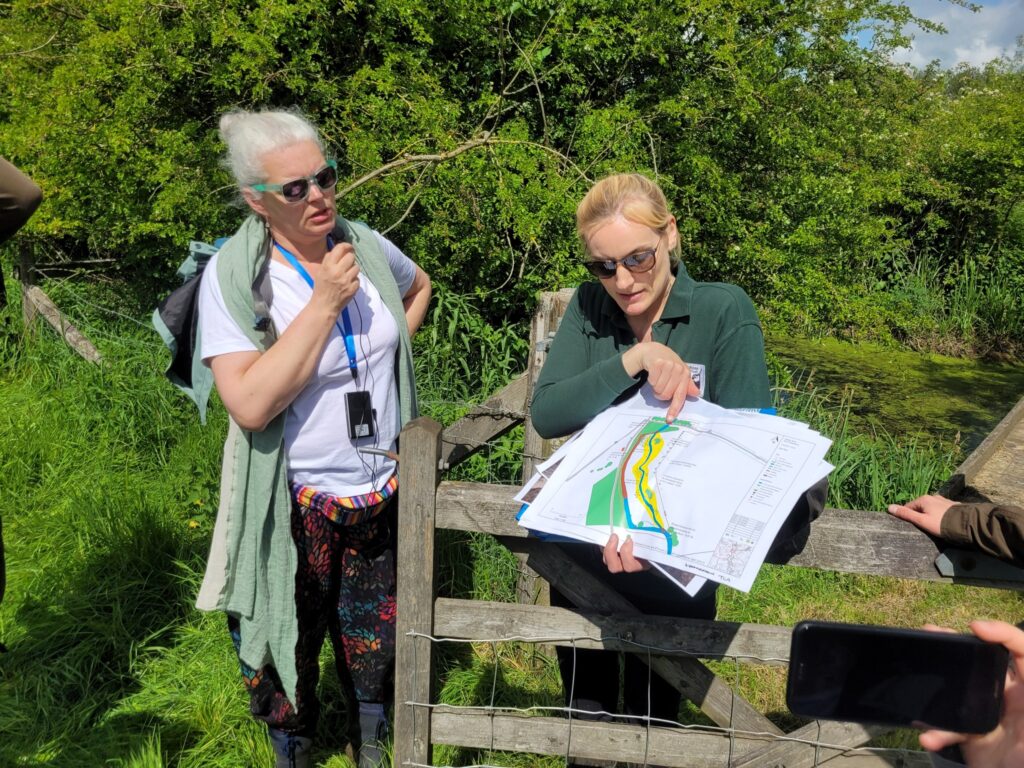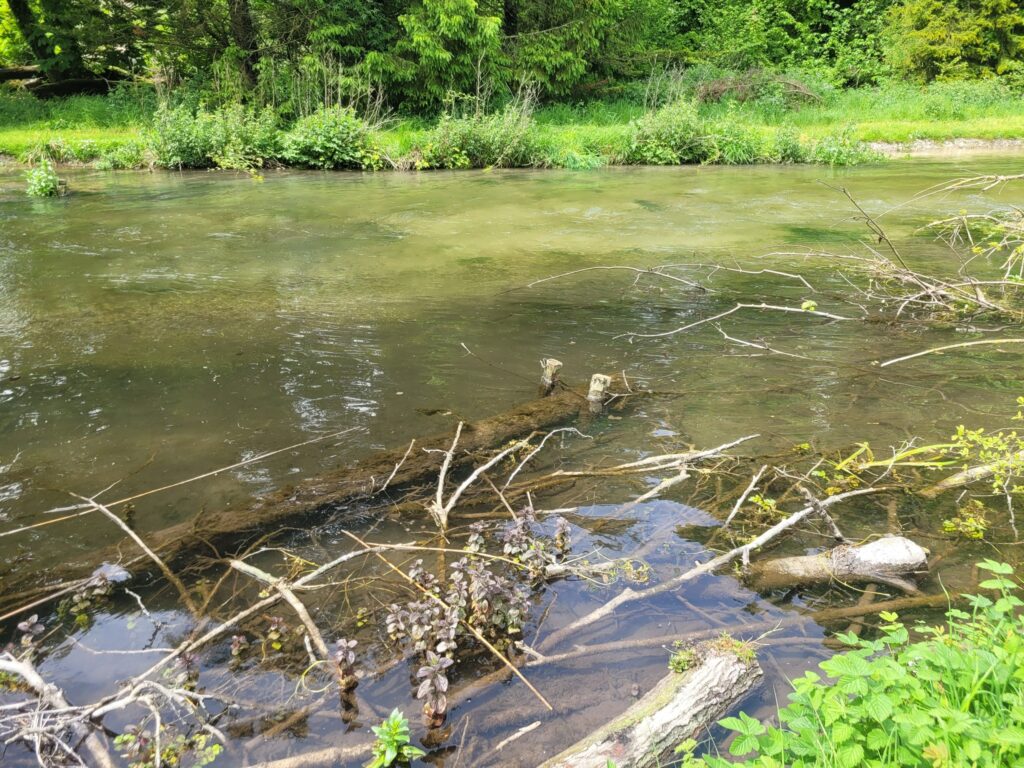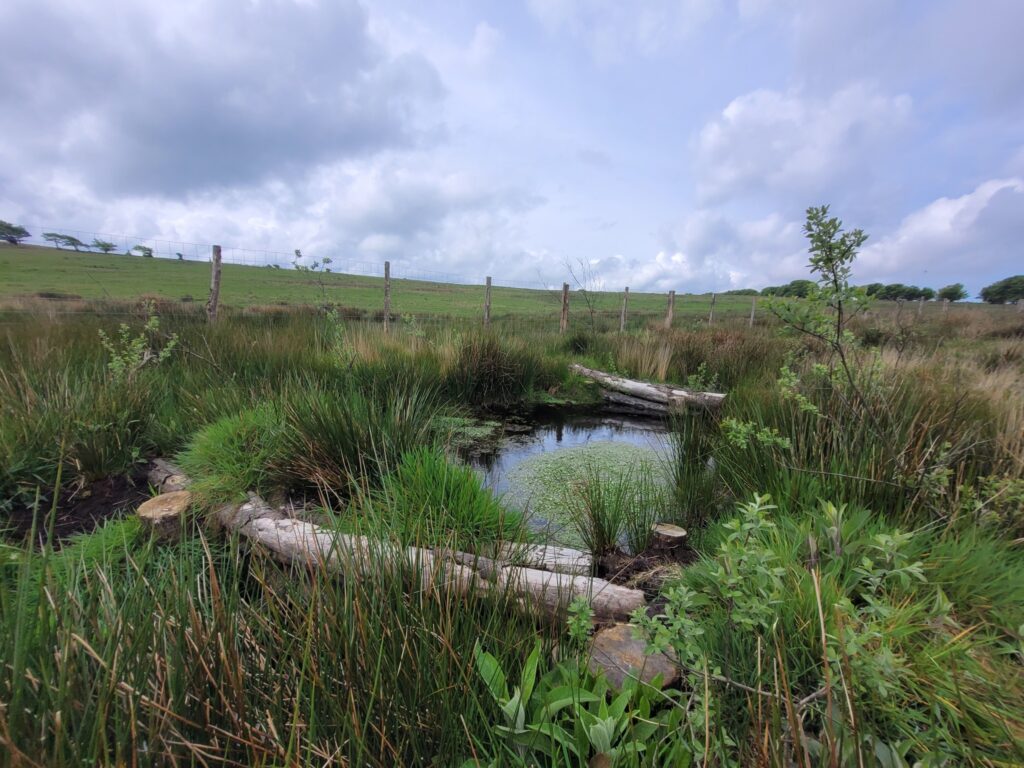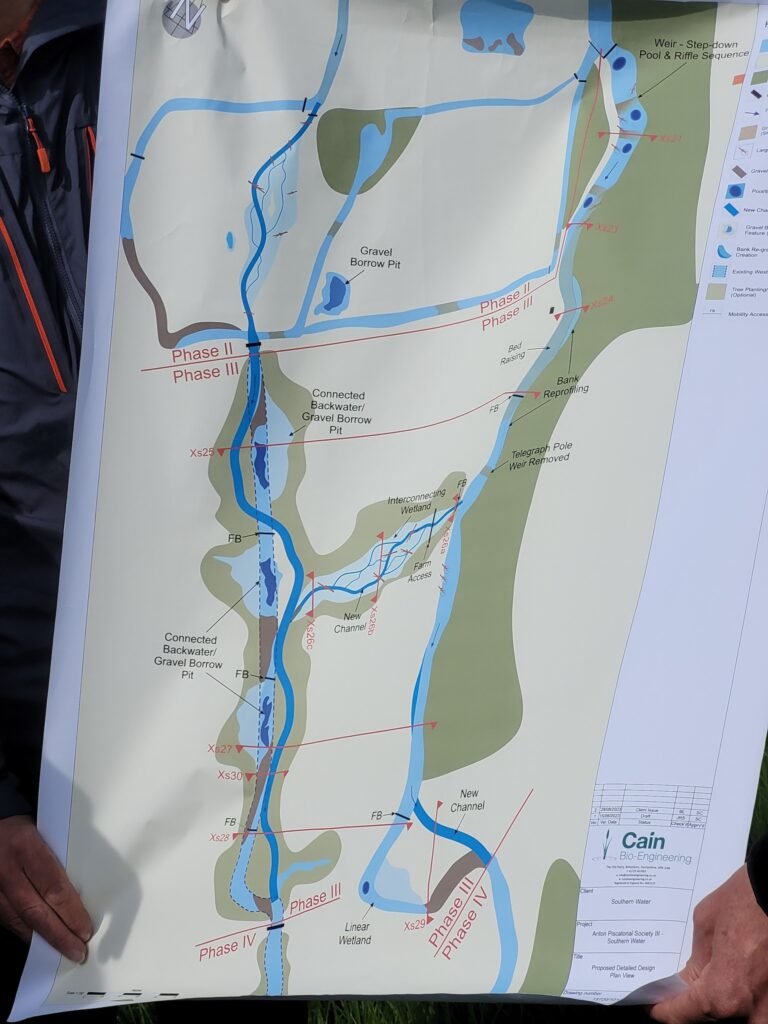From 13 to 17 May 2024, members of the project team, together with invited guests from conservation-related institutions, made a study visit to England on river restoration. Our guides were staff from public institutions and non-governmental organisations involved in nature conservation, particularly fish conservation. Participants saw:
The Bourne Rivulet restoration project implemented in 2023 by the Wild Trout Trust with partners. The Bourne Rivulet is a small, lowland, chalk river, a tributary of the River Test. The project involved putting a lot of wood into the river, lowering the bank and fencing to prevent excessive trampling by livestock. You can read more here: https://www.wildtrout.org/assets/reports/WTT-NEWSLETTER-2023-FINAL.pdf (page 20).
The Lower Anton River Restoration Project – a project on the River Anton implemented in 2021 by the Piscatorial Society in broad partnership. Measures implemented include remeandering the channel, feeding the river with gravel and forming a sequence of riffles and plos to create habitat for fish, reconnecting the river to the floodplain. Read more: https://www.winchesterrivertestcluster.org/news-events/blog-post-title-one-95chs.
Activities carried out by the National Trust in the catchments of the Aller and Horner rivers within the Holnicote Estate – an area mostly owned by this trust, where a whole range of pro-nature activities are being undertaken, which you can find out about on the virtual tour: https://storage.viewit360.co.uk/national-trust/holnicote-estate/. We saw an attempt to delay the outflow of water from the wetlands lying at the very top of the catchment, and an innovative approach to restoration called Stage Zero, i.e. the very radical realignment of a previously transformed river with its neighbourhood, thus restoring connectivity with the floodplain and leaving it completely free to shape its channel. You can read more here: https://www.nationaltrust.org.uk/services/media/national-trust-sets-river-free-with-pioneering-restoration-approach-in-somerset. Additionally, we have seen how in England an attempt is being made to reintroduce the beaver after an absence of several hundred years – in a fenced enclosure and under strict control: https://www.nationaltrust.org.uk/services/media/baby-beaver-boom-on-exmoor-in-somerset-as-three-kits-are-born-in-conservation-success-story
When viewing rivers in England it is important to remember that:
- the regulation of rivers in England has been going on for almost 2,000 years. Almost every river here has been diked several times over the centuries.
- rivers are privately owned. In practice, this means that you cannot walk on the rivers without agreeing this with the owner.
- activities on the rivers are agreed with the Environmental Agency, which looks after both flood safety and the nature of the rivers.
- river restoration in the UK is now 30 years old. In the beginning, single, small engineering-type measures were carried out. Then measures covered increasingly larger sections of the riverbed and measures increasingly used nature based solutions. Eventually, restoration activities started to think not only about river channels, but entire catchments and landscapes, involving a variety of partners.


 RETURN
RETURN